Overview
SimuPrime specializes in leveraging both the Finite Element Method (FEM) and Computational Fluid Dynamics (CFD) to address a wide range of mechanical-structural and fluid flow challenges for industrial use case application and scientific projects.
For FEM analyses, SimuPrime offers comprehensive solutions for analyzing structural behavior. Our FEM services include:
- Geometric specifications derived from drawings or CAD data
- Effective meshing generation for simulation efficiency
- Material experimental characterizations
- Material calibration for FEM simulation applications
- Kinematic boundary conditions and loading parameters
In addition to FEM, SimuPrime extends its expertise to Computational Fluid Dynamics (CFD) analyses, offering comprehensive solutions for fluid flow simulations. Our CFD services encompass:
- Fluid domain definition based on geometry specifications
- Selection and modeling of fluid properties
- Boundary conditions setup, including inflow/outflow parameters
- Application of appropriate turbulence models and solution algorithms
We collaborate closely with our clients to provide comprehensive quotations tailored to their specific needs, taking into account the scope of work and input data requirements. Our analysess encompasses three key stages: Preprocessing (modeling), Processing (numerical analysis) Post-processing (documentation of results).
Upon completion, clients receive an extensive post-processing package tailored to their specific needs, including reports with customized outputs, visually engaging presentations, and in-depth interpretation of results addressing customer concerns. Our reports are presented in a visually appealing format, utilizing figures, graphics, and even movies where applicable. To ensure continued accessibility, all post-processing documents are archived on appropriate formats, providing clients with immediate access to their data whenever necessary.
Automotive Industry
In the automotive industry, advanced engineering methodologies are essential for ensuring the performance, safety, and efficiency of vehicles. Finite Element Method (FEM) simulations have emerged as a powerful tool for automotive engineers, offering comprehensive insights into the behavior of vehicle components and systems. From optimizing driving performance to analyzing crash dynamics and optimizing body structures, FEM simulations play a crucial role in the design and development of modern automobiles.

Driving Performance: Driving performance in the automotive industry encompasses the dynamic behavior of vehicles on the road, including acceleration, handling, and stability. Utilizing Finite Element Method (FEM) simulations, SimuPrime engineering team analyzes various factors affecting driving performance, such as chassis stiffness, suspension dynamics, and aerodynamics. Through these simulations, vehicle designs can be optimized to enhance performance metrics, safety, ensure passenger comfort and improve fuel efficiency.
Crash Analysis: Crash analysis is a pivotal aspect of automotive engineering, focusing on studying vehicle behavior during collisions to enhance occupant safety and structural integrity. Leveraging FEM simulations, SimuPrime conducts virtual crash tests to simulate different collision scenarios and assess the impact behavior of vehicle structures. These simulations enable automotive manufacturers to evaluate crashworthiness, identify potential failure modes, and refine structural components to meet stringent safety standards and regulations.
Body Structure Optimization: Body structure optimization is essential for improving the structural performance and efficiency of vehicle designs. Through FEM simulations, SimuPrime engineers analyze the behavior of vehicle body structures under diverse loading conditions, including static loads, dynamic forces, and environmental factors like vibration and thermal stress. By optimizing body structures, automotive manufacturers can achieve lightweighting goals, enhance structural rigidity, improve crashworthiness, and reduce material usage and manufacturing costs.
Thermal Management: Thermal management is crucial in automotive design to ensure optimal performance and longevity of vehicle components. FEM simulations allow engineers to analyze heat dissipation, airflow patterns, and thermal stress within the vehicle system. By optimizing thermal management systems, such as cooling systems and heat shields, automotive manufacturers can enhance vehicle efficiency, reliability, and durability.
Noise, Vibration, and Harshness (NVH): NVH analysis focuses on minimizing noise, vibration, and harshness levels in vehicles to enhance passenger comfort and vehicle quality. FEM simulations enable engineers to identify sources of noise and vibration, analyze structural resonances, and optimize vehicle components to mitigate NVH issues. By addressing NVH concerns early in the design process, automotive manufacturers can deliver quieter, smoother, and more refined vehicles to market.
In the competitive landscape of the automotive industry, SimuPrime’s commitment to advanced simulations empowers manufacturers to push boundaries, delivering vehicles that excel in performance, safety, and sustainability.

Utility Vehicle
Transport and Logistics: Designing utility vehicles for transport and logistics requires careful consideration of cargo space, payload capacity, and maneuverability. At SimuPrime, we integrate these factors into our design process, utilizing advanced modeling techniques to optimize vehicle layouts and storage configurations. Through Finite Element Method (FEM) simulations, we analyze the structural integrity of utility vehicle bodies and chassis under various load conditions, ensuring robustness and durability in demanding transport environments. By harnessing FEM simulations, we enable utility vehicle manufacturers to deliver reliable solutions that meet the diverse needs of logistics operations.
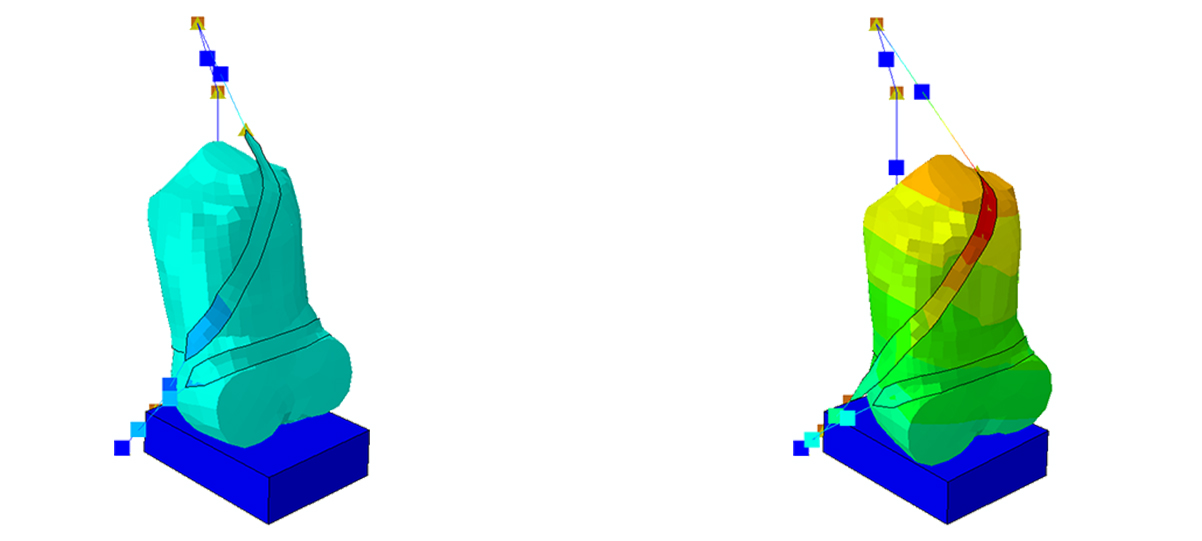
Vehicle Instrumentation and Safety Facilities: Safety is paramount in utility vehicle design, and at SimuPrime, we prioritize the integration of advanced safety features and facilities. From safety belts and airbags to advanced driver assistance systems (ADAS), we leverage FEM simulations to assess the effectiveness of safety components and optimize their performance. Through virtual crash tests and impact simulations, we evaluate the behavior of safety systems under different collision scenarios, ensuring compliance with rigorous safety standards and regulations. By incorporating FEM simulations into the design process, we enable utility vehicle manufacturers to enhance occupant protection and minimize the risk of injury in the event of accidents.
Structural FE simulation
Structural FEM simulation is integral to modern engineering practices, allowing us at SimuPrime to predict and optimize the behavior of complex structures across industries. By utilizing Finite Element Method (FEM) simulations, we ensure the integrity, reliability, and performance of engineered structures. From aerospace components to automotive chassis and civil infrastructure, our simulations enable us to identify design flaws, optimize configurations, and mitigate risks early in the design process. With our structural FEM simulation services, we reduce the need for costly physical testing, accelerate design iterations, and bring products to market faster, ensuring improved product quality and reliability for our clients.
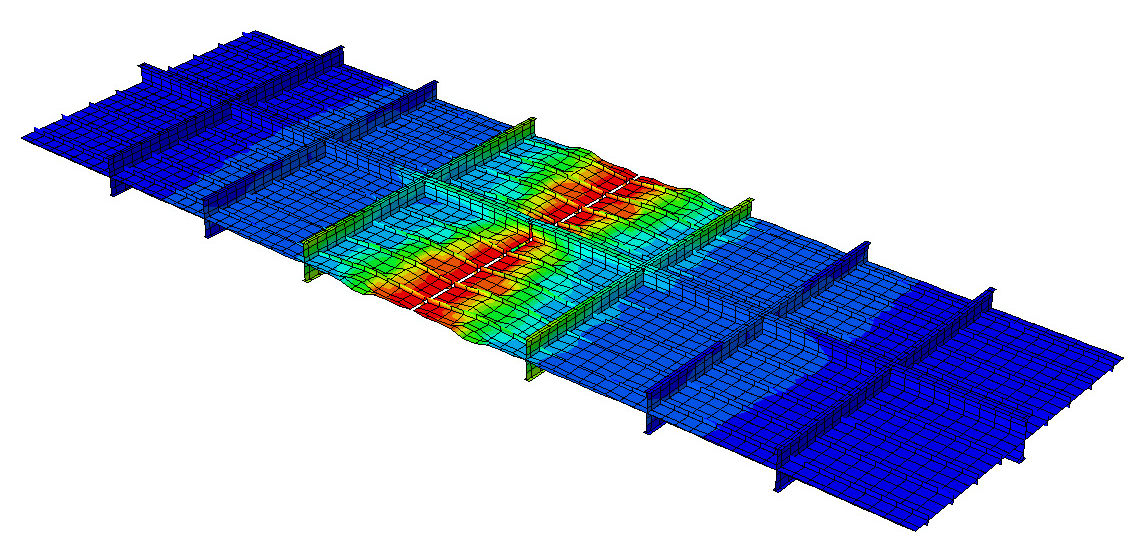
Multi-body System Analysis
Multi-Body System simulation is a powerful tool used to analyze the dynamics of interconnected mechanical systems. We specialize in modeling and simulating complex interactions between interconnected components, such as vehicles, machinery, and robotic systems. By employing multi-body system simulations, we can predict the behavior of these systems under various operating conditions, optimize performance, and enhance design efficiency. Our expertise in multi-body system simulation enables us to provide tailored solutions to meet the dynamic challenges faced by our clients across diverse industries.

Converting and Forming Process
The converting and forming process encompasses a range of manufacturing techniques used to produce the desired finished products from raw material. We have extensive FEM simulation expertise in simulating and optimizing these processes to ensure efficiency, quality, and reliability, especially for very fast industrial use case converting processes .
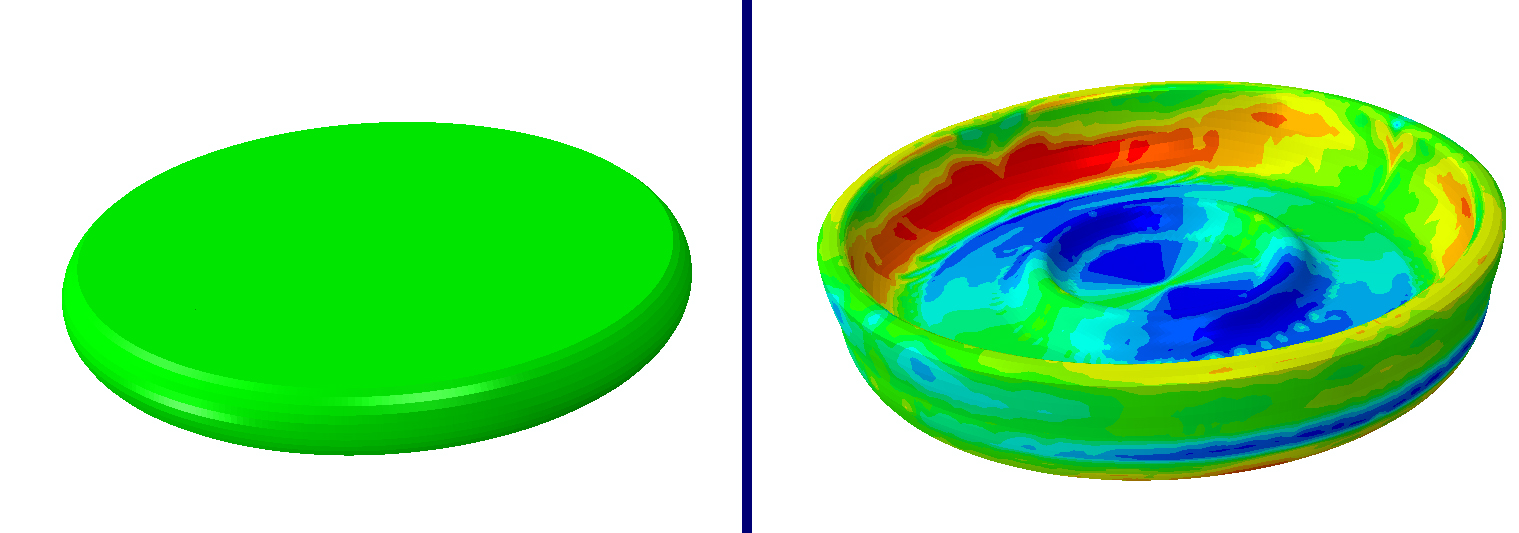
From sheet metal forming and packaging converting procedures to injection molding and extrusion, our simulations enable us to predict and improve material behavior, product development, optimize process parameters, and minimize defects. With our expertise in converting and forming process simulation, we empower manufacturers to enhance productivity, reduce costs, and deliver high-quality products to market.
A library of FEM spatial models, already developed with a range of standard and operational parameters across different scales, facilitates rapid analyses. These analyses can cover a variety of processes, such as high-speed packaging converting, deep drawing, metal forming, and forging, encompassing various materials including metals, composites, carton, and paperboard.
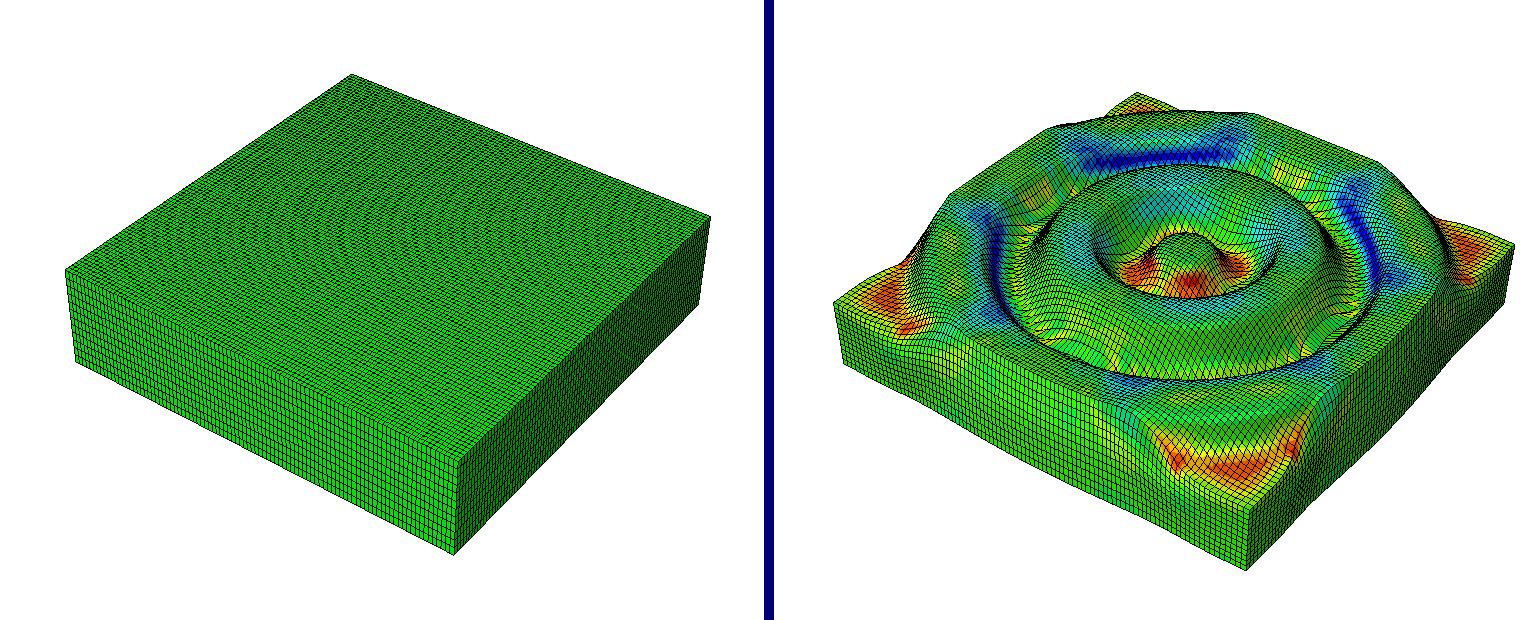
Medical Engineering
The Finite Element Method (FEM) enables an assessment of biomechanical engineering to address diverse challenges in healthcare. We utilize advanced FE modeling techniques to analyze the effects of medical interventions on patient-specific conditions. By considering each person’s lifestyle and age, our simulations enable personalized medical care, optimizing treatment strategies, and enhancing patient outcomes.
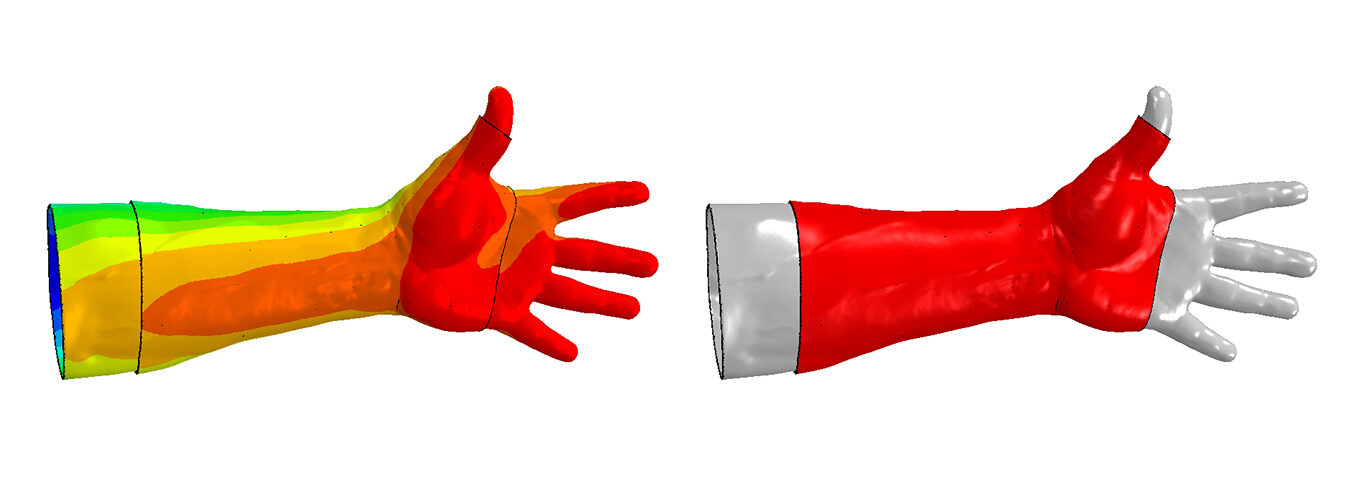
Our biomechanical FEM simulations allow us to assess the performance and durability of biomedical components such as implants, predict bone healing processes, and optimize surgical techniques for individual patients. Whether it’s designing custom implants for orthopedic surgeries or simulating the biomechanics of prosthetic devices, our expertise in this area empowers healthcare professionals to make informed decisions, improve treatment efficacy, and provide personalized care tailored to each patient’s unique needs and circumstances.
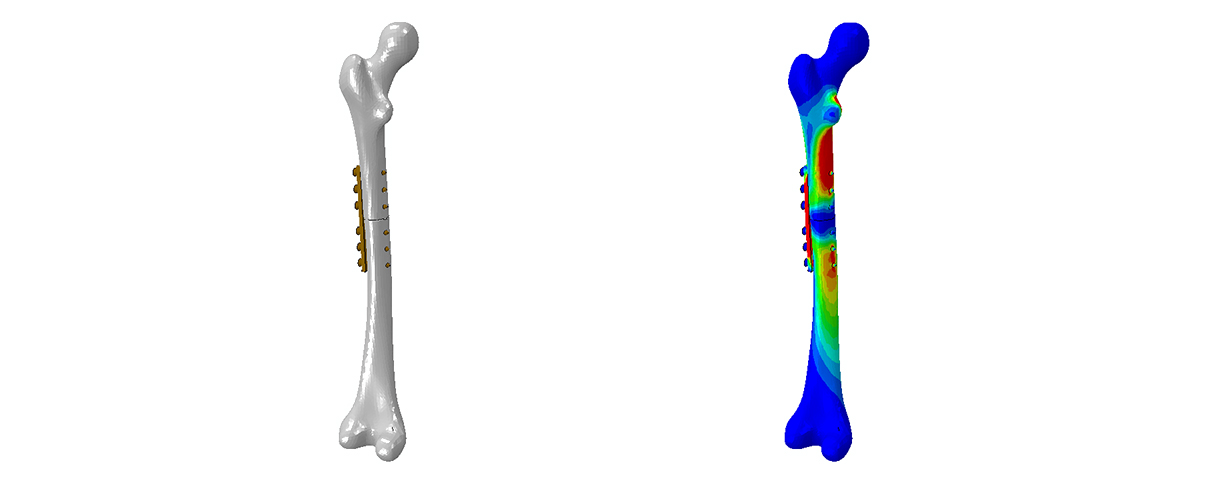
Composite structures
At SimuPrime, our expertise in Finite Element Method (FEM) simulation extends to the comprehensive analysis of composite structures, encompassing various aspects from material characterizations to identifying delamination and optimizing lightweight structures.
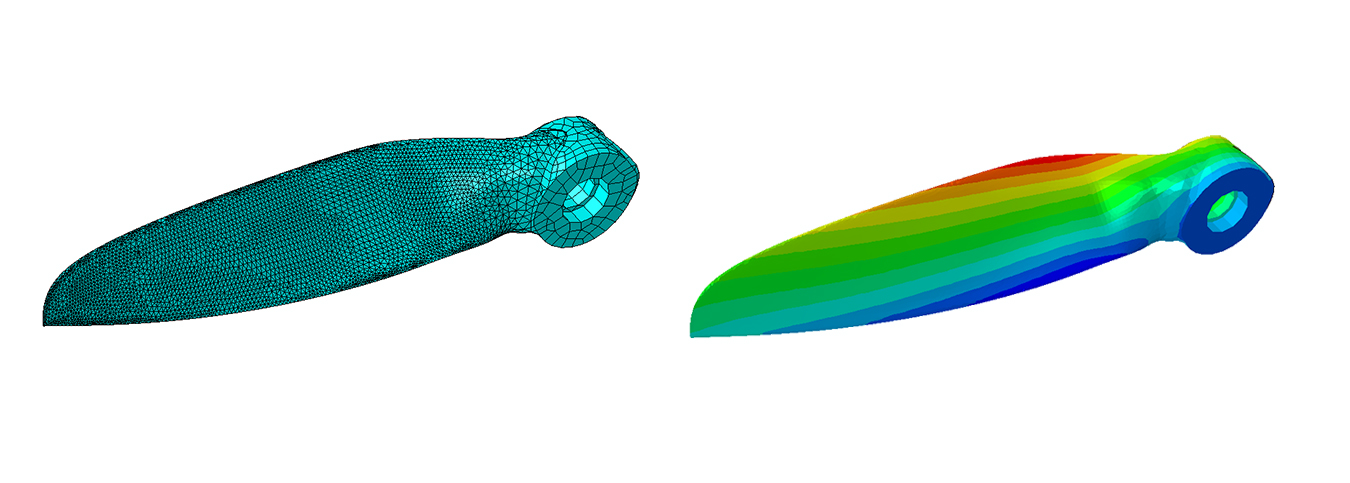
Our FEM simulations enable accurate material characterizations, including mechanical properties such as stiffness, strength, and fatigue behavior. By simulating composite converting procedures, such as layup processes and curing cycles, we optimize manufacturing techniques to ensure the desired material properties and structural integrity of composite components.
Delamination, a common concern in composite structures, is effectively identified and mitigated through our FEM simulations. By simulating delamination propagation and analyzing stress concentrations, we enhance the reliability and durability of composite structures, minimizing the risk of premature failure.
In addition to structural analysis, our FEM simulations facilitate the design of lightweight structures by optimizing material distribution and thickness, resulting in weight reduction without compromising performance. These lightweight composite structures find applications across diverse industries, from aircraft fuselages and automotive body panels to wind turbine blades and sporting goods.
With our expertise in composite structures FEM simulation, we empower industries to develop innovative solutions, optimize product performance, and achieve sustainability goals by utilizing lightweight and durable composite materials.
A library of FEM spatial models, have been already developed with a range of standard and operational parameters across different scales, facilitates rapid analyses. These analyses can cover a variety of processes, such as composites material calibration for FE simulation, delamination FE analyses, composites converting tools and process optimization.
Polymers, rubbers and adhesives
Polymers, rubbers, and adhesives are integral to numerous applications, including tire structures, packaging solutions, and adhesive bonding. At SimuPrime, our specialization lies in Finite Element Method (FEM) simulation of these materials, offering comprehensive analysis and optimization across various industrial sectors:
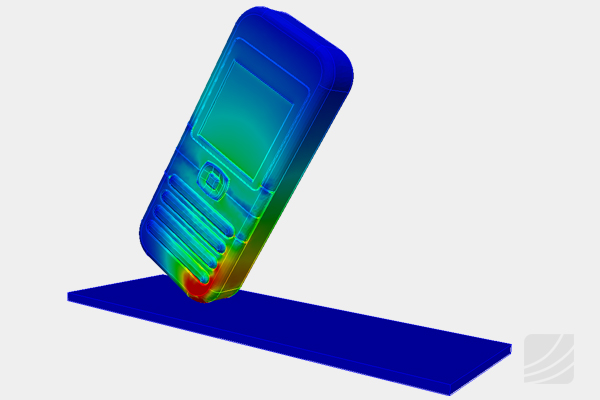
Our FEM simulations allow us to characterize the mechanical properties of polymer-based materials and their end products. Additionally, we predict long-term behaviors such as creep and relaxation effects, crucial for industrial applications. These include steady-state operational processes, ensuring product stability over extended periods. Furthermore, we optimize long-distance logistic transport for plastic containers, enhancing durability and performance. We also explore spout applications, ensuring leak-proof and efficient packaging solutions. Additionally, we evaluate the overall product performance of plastic-based bottles and containers, guaranteeing reliability and functionality in diverse usage scenarios.
In tire manufacturing, our FEM simulations analyze complex interactions among tire components under various loading conditions. By simulating tire behavior during motion, cornering, friction (hysteresis and adhesion), braking, and road contact, we optimize designs to enhance grip, traction, and wear resistance, resulting in safer and more efficient vehicles.
Moreover, our FEM simulations analyze the adhesive bonding process, covering surface preparation, adhesive application, curing, and durability. We optimize adhesive formulations and bonding techniques to meet performance requirements across industries, from automotive assembly to aerospace manufacturing.
With our expertise in polymers, rubbers, and adhesives FEM simulation, we empower industries to innovate, enhance manufacturing processes, and improve product performance and reliability.
CFD Analysis
At SimuPrime, we provide advanced Computational Fluid Dynamics (CFD) simulations to optimize industrial and large-scale engineering applications, delivering precise insights into fluid behavior, heat transfer, and aerodynamics.
In industrial applications, our CFD solutions enhance filling processes, ensuring efficiency and consistency in packaging filling for industries such as food, pharmaceuticals, and chemicals. For example, in the packaging industry, CFD helps simulate liquid flow inside bottles or containers, preventing issues like splashing, trapped air, or uneven filling. By optimizing nozzle design and fluid dynamics, manufacturers can achieve faster and more precise filling processes, reducing material waste and improving production efficiency.
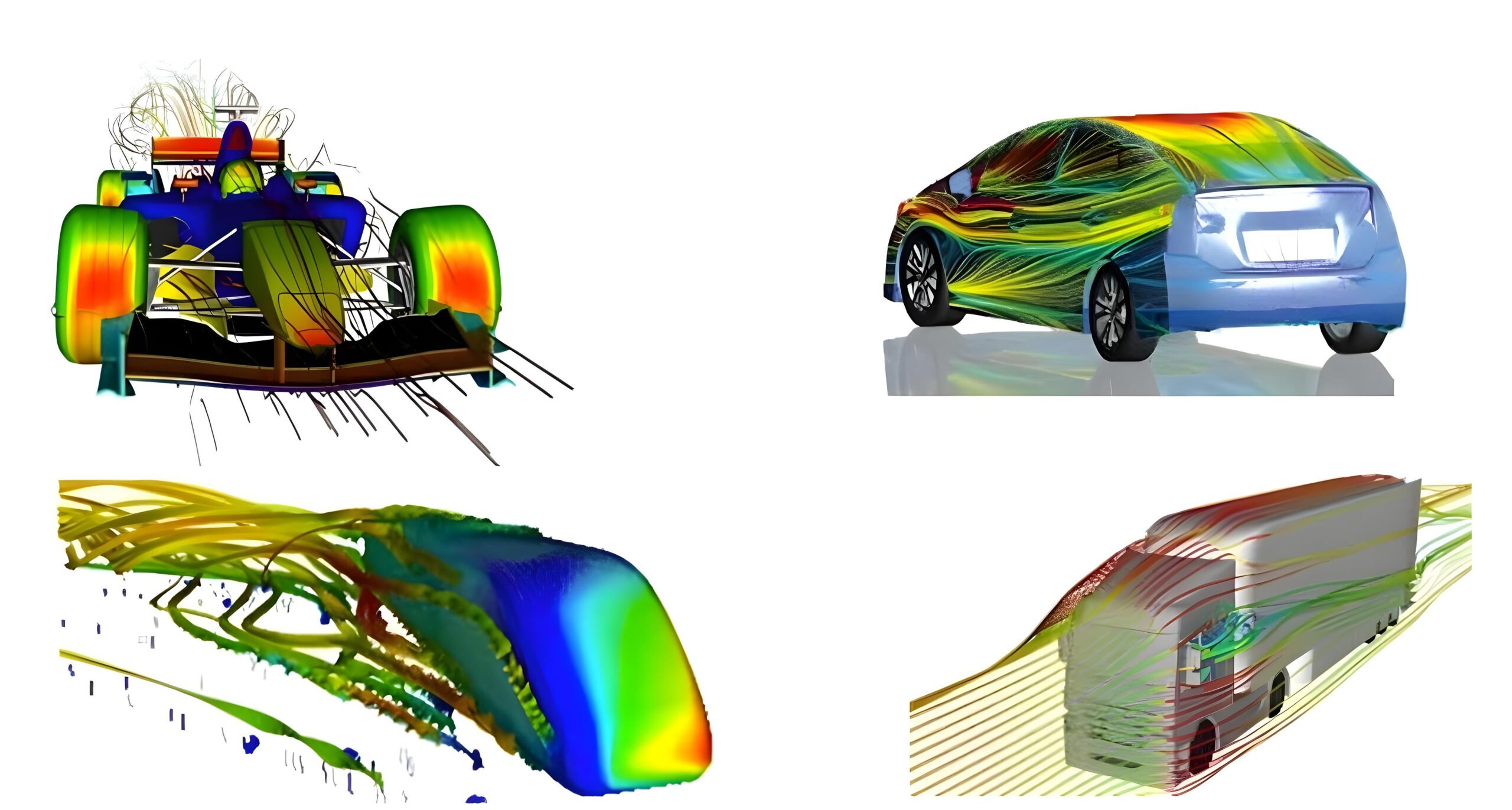
In the automotive sector, we help reduce aerodynamic drag, improve fuel efficiency, and optimize heat transfer for engine cooling and HVAC systems. By leveraging CFD simulations, we analyze external airflow around vehicles to minimize drag, enhance stability, and improve overall aerodynamics, leading to better fuel economy and reduced emissions. Our expertise also extends to internal flow simulations, optimizing engine cooling systems to prevent overheating and enhance performance. Additionally, we improve HVAC system efficiency by simulating airflow distribution inside the vehicle cabin, ensuring optimal passenger comfort, defogging efficiency, and energy savings in both conventional and electric vehicles.
For large-scale applications, SimuPrime’s CFD expertise enables accurate simulations of outdoor cooling, including wind effects on ceiling structures, urban microclimates, and ventilation efficiency. These insights support energy-efficient designs, safety assessments, and real-world performance validation.
Additionally, we have developed specialized CFD models using Smoothed Particle Hydrodynamics (SPH) to accurately simulate fluid-solid interactions. This mesh-free approach ensures high precision and stability, making it ideal for free-surface flows, multiphase interactions, and deformable structures. Our efficient and robust SPH-based models offer superior adaptability for applications where traditional mesh-based methods fall short, such as filling processes, packaging simulations, and automotive fluid dynamics.
By leveraging CFD and SPH-based simulations, SimuPrime helps businesses reduce prototyping costs, enhance product reliability, and accelerate innovation—driving smarter, more efficient engineering solutions across industries.
Ready to Elevate Your Simulation Projects?
Contact SimuPrime today to harness the power of advanced FEM and CFD analyses for your industrial and scientific projects. Our team of experts is ready to provide tailored solutions that meet your specific needs. Let’s collaborate to achieve outstanding results in mechanical-structural and fluid flow simulations.
